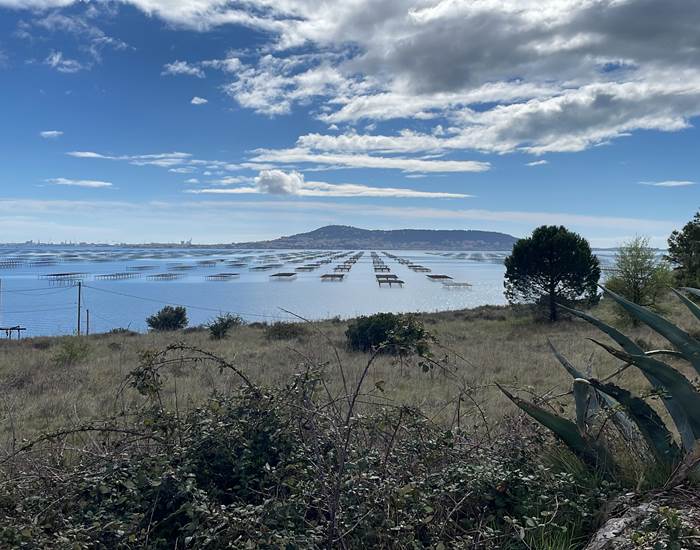About the Thau pond, the lagoons...and the oysters.

L'étang de Thau
Mediterranean oysters are farmed throughout the French Mediterranean coast from Leucate to Corsica.
There are seven production zones along its coastline.
These shellfish have a specific flavor and shape depending on their production environment, breeding depths, nutrients naturally present in the environment and the seasons. This diversity of production sites offers a range of varied pleasures, which invites indulgence. Rich in nuances, the Mediterranean oyster seduces all palates.
Thau is the largest and deepest lagoon in Occitania. With 2,800 tables and around 500 producers, it is also the most important shellfish growing area in the Mediterranean. Archaeological excavations have made it possible to discover large quantities of flat oysters on lake camps, attesting to the Romans' appetite for these shellfish from the 1st century AD and even raising doubts about their cultivation.
Here, the aquatic life is so rich that the oyster ropes are transformed, barely submerged, into real artificial reefs. Classified as a Natura 2000 site, the Thau lagoon is the land of the speckled seahorse. A true barometer of water quality, this small horse-headed fish attracts divers from all over the world.
The lagoon is a mixture of fresh water and salt water perpetually renewed thanks to currents. This mixing allows the purification and oxygenation of the ecosystem, essential to all aquatic life. Salt water comes from the sea through graus and canals. Fresh water flows through the rains, rivers, the Canal du Midi and the underground source of the Vise, located 30 meters deep. These contributions make the Thau basin a renowned site for the growth of oysters, almost three times faster than on the Atlantic coast.
If, in the past, the Thau basin suffered from eutrophication, thanks to the combined action of communities, scientists and professionals, the quality of the water has greatly improved and the lagoon has today reached good ecological status within the meaning of the European Water Framework Directive.
With a length of 19.5 km and a width of 4.5 km, this body of water extends over approximately 7,000 ha. Its average depth is 4.50 m.
Forerunners of rope farming, Thau professionals continue to innovate to enhance their production. Latest invention to date: exodation which consists of taking the oyster out of the water during part of its growth to encourage it to stock up and become tougher.
A second production site is located off the coast on lines in the open sea. On the Aresquiers plateau and off the coast of Sète Marseillan, around 500 lines have been installed since the 1990s.
CRCM

 fr
fr es
es de
de